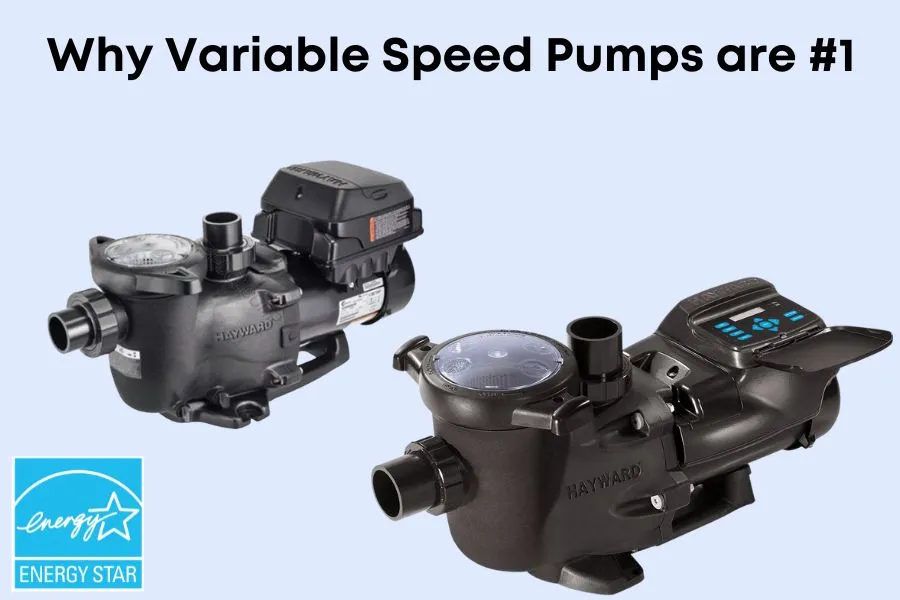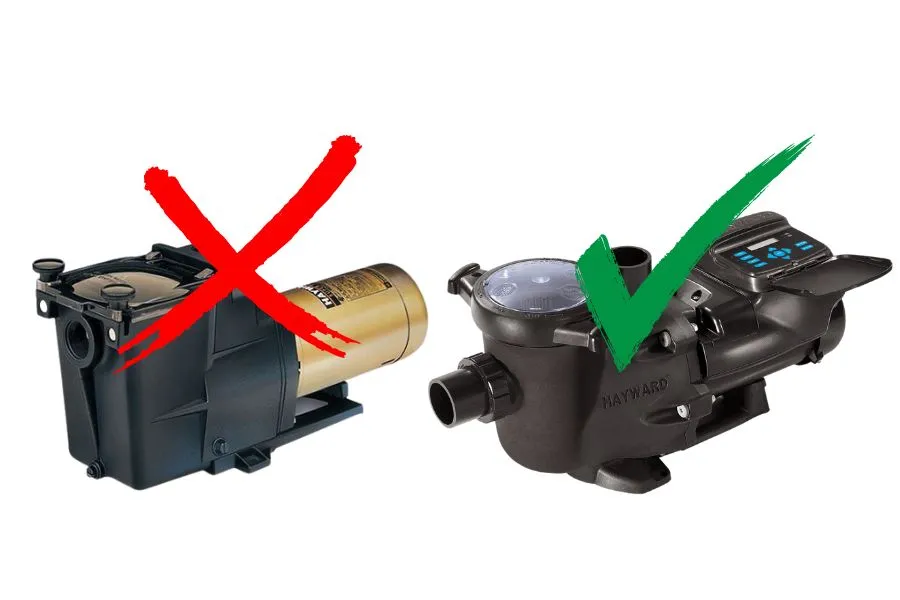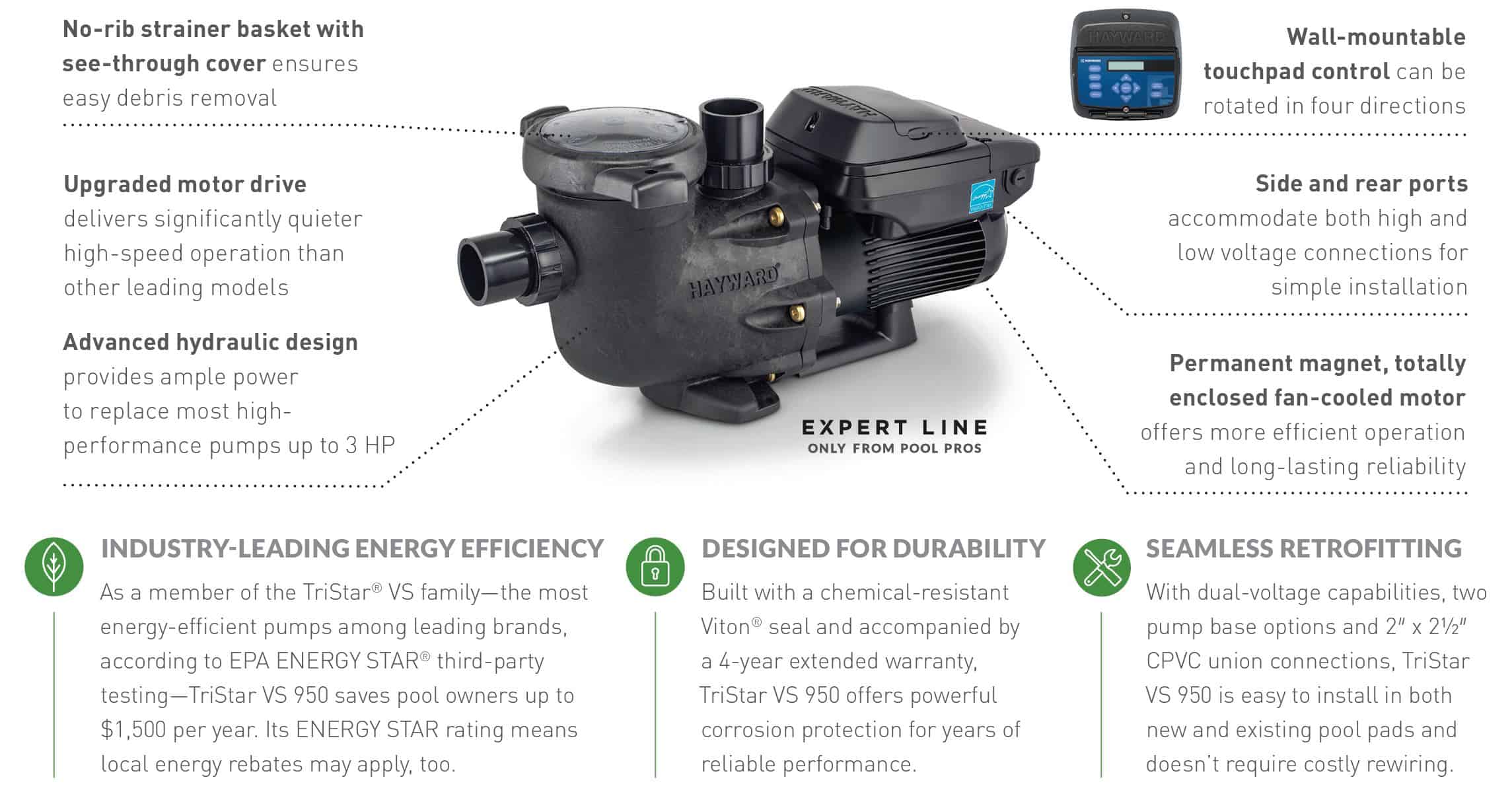

If you’re still relying on outdated, single speed pumps…you aren’t doing yourself any favors.
These inefficient pumps are very costly to run, and in this post, we’ll discuss why upgrading to a variable speed pump is a smart decision.
We’ll cover all the benefits of making the switch, including vast energy savings and improved performance.
So, whether you’re in the market for a new pool pump or just curious about the advantages of a variable speed pump, keep reading to learn more!
Single speed pumps operate at a fixed speed and can only run at one speed setting, typically the highest.
This means they use a lot of energy, resulting in high utility bills.
Variable speed pumps, on the other hand, allow you to adjust the speed of the motor to match your pool’s specific needs.

This flexibility means they use significantly less energy, which results in far lower operating costs and a much longer lifespan.
In addition, variable speed pumps are also much quieter.
So if you value saving money and getting some peace and quiet, you’ll definitely be interested in making the upgrade.

That about wraps it up!
By making the switch to a variable speed pump, you’ll enjoy a more efficient and cost-effective pool experience.
Be on the lookout for our next post, where we’ll guide you through our top recommended variable speed pumps for 2023.
If you’re interested in upgrading or have any questions about pool maintenance and equipment, don’t hesitate to contact us at Romanelli & Son Pool Service.
Our team of qualified pool professionals is here to help you make the most of your pool and ensure that it’s always operating at its best.
Call us today to learn more!

We make pool ownership easy with stress-free maintenance, expert repairs, and cutting-edge tech. From sparkling water to pool automation, we handle every detail so you can relax and enjoy your pool.
© 2025 Paul Romanelli & Son Pool Service.